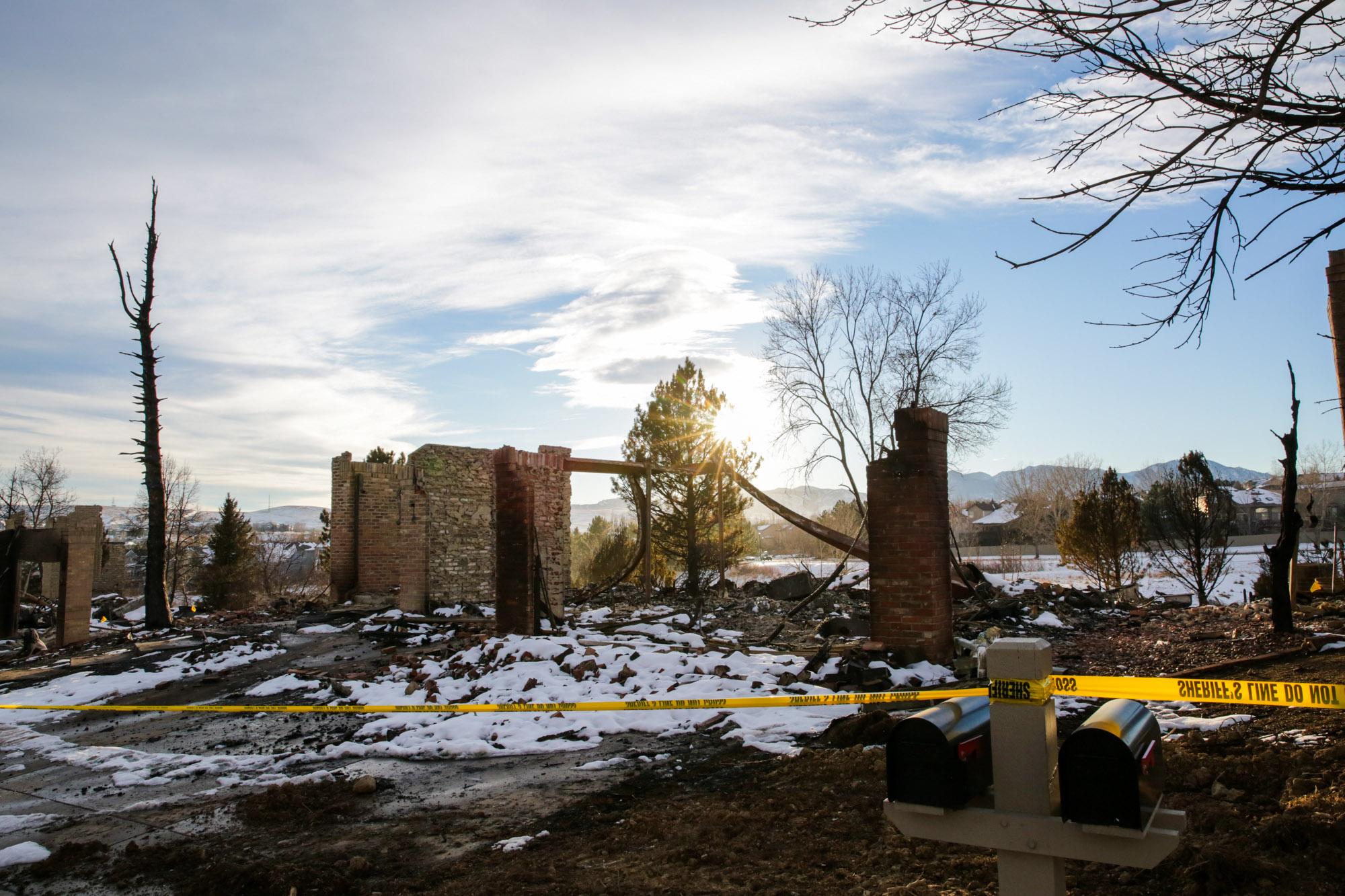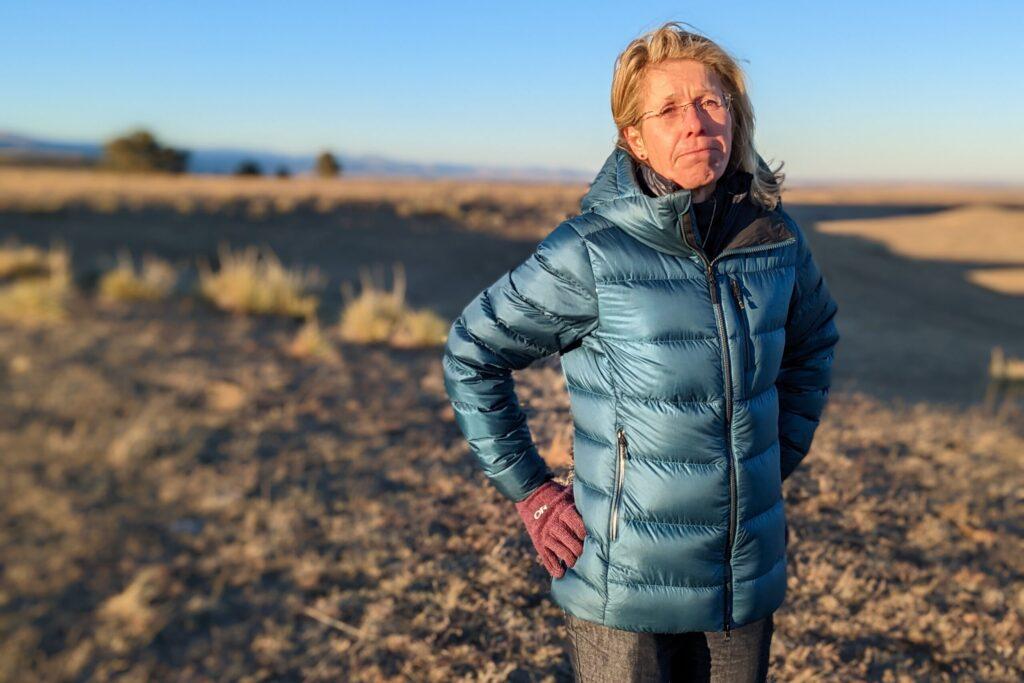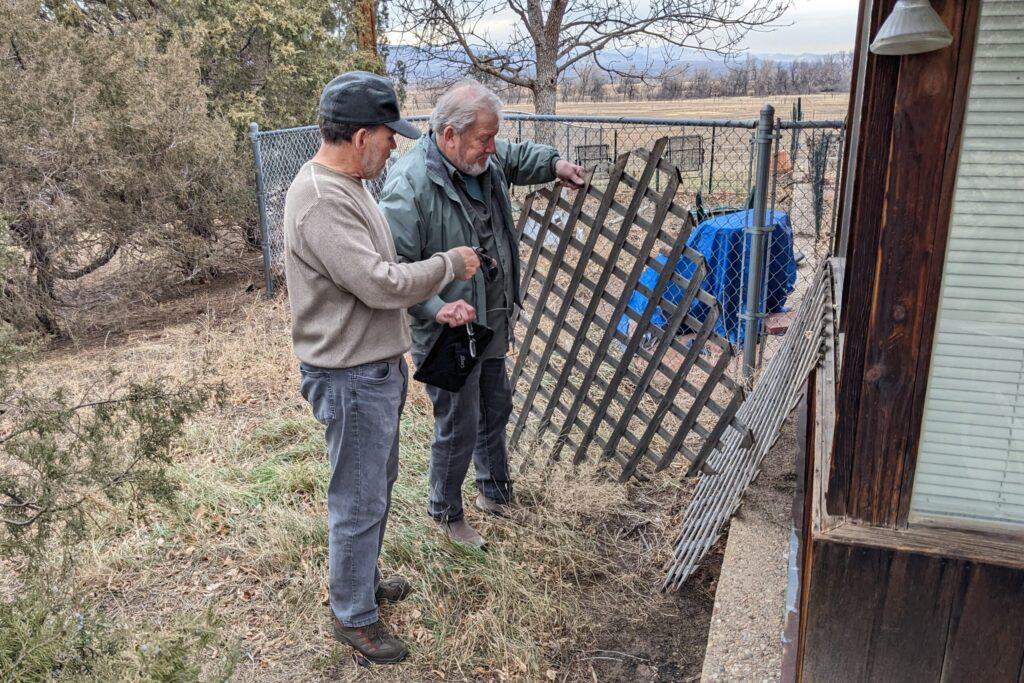
From her hilltop research site, Katharine Suding, a plant ecologist with the University of Colorado Boulder, can see some of the first areas that burned in the Marshall fire.
The setting of the 2021 disaster shocked Boulder County residents and scientists. While the original cause is still under investigation, the blaze got rolling in protected grasslands before hurricane-force winds rocketed it into suburban communities far outside the mountains.
By the time the smoke cleared, more than 1,000 homes had been incinerated, making it the most destructive wildfire in Colorado history.
“We’ve ignored grasslands in terms of fire risk. We’ve concentrated a lot on forests — and we need to really better understand the differences,” Suding said.
One critical distinction is the resilience of deep-rooted grasslands. No burn scar is visible from Suding’s perch above the fire zone, proving how quickly fuels can return to prairie landscapes. In woodlands, by contrast, studies show thinning trees and removing low branches can reduce dangerous wildfire fuels for years.
Suding said the challenge is even trickier due to climate change, which has brought drier summers and falls to the Front Range and packed areas with quick-burning thatch. She said the result is a “high window of risk that wasn’t there before.”

Her team is now working with local governments to develop strategies to reduce fire risk without sacrificing the benefits of grasslands, which include storing carbon and supporting biodiversity. In the meantime, Boulder County is expanding fire mitigation programs from the mountains into the plains to protect homes from future prairie fires.
Those early efforts could contain lessons for other communities. In 2017, the Colorado State Forest Service estimated nearly 3 million people — about half the state’s population — live in areas vulnerable to wildfire. That data comes from wildfire risk maps, which show grassland fires threaten many suburban communities along the Front Range.
A year after the disaster, here are five ideas local governments in Boulder County are considering to guard against future grassfires.
1. Hardening homes
In November, Boulder County voters approved ballot issue 1A, which will raise $11 million annually to fund wildfire mitigation efforts. The money will expand Wildfire Partners, a program that previously helped mountain and foothills homeowners make their homes less vulnerable to fire.
The additional funding will expand access to residents living on the plains. That will allow people to call in a free inspector to identify steps to make their home more fire-resistant, such as removing cedar fences, installing a new roof or putting metal screens over vents to protect against embers.
County Commissioner Matt Jones, who advocated for the ballot initiative, said the expansion comes in direct response to last year’s disaster. He added about 250 people applied for a pilot project aimed at plains residents, proving there’s already abundant demand for the service.
“We can build on that,” Jones said. “We’re now figuring out how many people need it and where. We’re just starting to have conversations with cities about how that might look since Boulder already has a similar program. Other cities do not, like Louisville and Superior.”
2. Mowing
Other methods reduce fuel in natural landscapes rather than the built environment. That task is especially important in places where grasslands border homes, giving wildfires a clear and dangerous pathway into communities.
Mowing is one potential method to create a buffer, but Therese Glowacki, the director of Boulder County Parks and Open Space, warns it would be nearly impossible to deploy at scale. The department owns 25,000 acres of land it leases back to farmers and ranchers. She said 343 miles of it borders private property.
“Especially if you would have to mow it three or maybe four times in a year, we would never have the staff or resources or equipment to get out and mow 343 miles of property boundary lines,” Glowacki said.
Glowacki said excessive mowing also harms soil health, killing native grasslands that provide habitat and protect water quality. At the same time, she said her department has shifted resources to mow target areas that present the greatest wildfire risk to nearby neighborhoods.
3. Grazing
Grazing is another method Boulder County communities already use to reduce grassland fuels. One question is whether it could be deployed even closer to suburban neighborhoods.
On a recent Saturday afternoon, Emily Gallagher with Grama Grass and Livestock held a grazing demonstration with goats and cows at the Davidson Open Space in Louisville. She said the animals pack an effective one-two punch, foraging for potential kindling while improving soil health. The challenge is keeping the animals moving to avoid overgrazing any single area, a task her company manages with mobile electric fences powered by solar panels.
Suding, the CU Boulder ecologist, plans to investigate if GPS collars could help. The technology can be used to create virtual fences, which might help guide animals to graze targeted areas around neighborhoods.
“We’re going to focus on fencelines,” Suding said. “Then we can use models to look at how fire behavior might change, so maybe we can manage fire risk instead of just waiting for the next one.”

4. Landscape wetting
Through her research, Suding also plans to investigate plans to build stone structures across grassland drainages. The hope is that will help retain water, keeping plants wetter throughout the year and less vulnerable to fires.
“That will benefit the soil and biodiversity as well,” Suding said.
5. Prescribed fire
The Front Range is no stranger to wildfires. Before Euro-American settlers brought a culture of fire suppression, North American prairies burned every two to 12 years, helping to reduce future fire risk and preserving rangeland for wildlife.
Prescribed fires could also help restore some of those benefits, but Glowacki, the Boulder County Parks and Open Space director, said it's tough to pull off near suburban neighborhoods. Grass needs to be dry, but not too dry. Winds can’t be too strong. A wealth of firefighters must be at the ready in case anything doesn’t go according to plan.
“It’s just a difficult thing to implement in this complex wildland-urban interface.”
More coverage of the Marshall fire, one year later:
- Meet the first homeowner to rebuild and move back after the Marshall fire
- Sheriff’s office says the Marshall fire investigation could be completed in early 2023
- ‘Dirt doesn’t burn’: Why some Marshall fire victims are rebuilding their homes with earthen blocks
- This climate-friendly house for Marshall fire victims isn’t a luxury home
- The Marshall Fire incinerated Will Scherer’s beloved Louisville violin shop. With residents’ help, he’s now reopening









